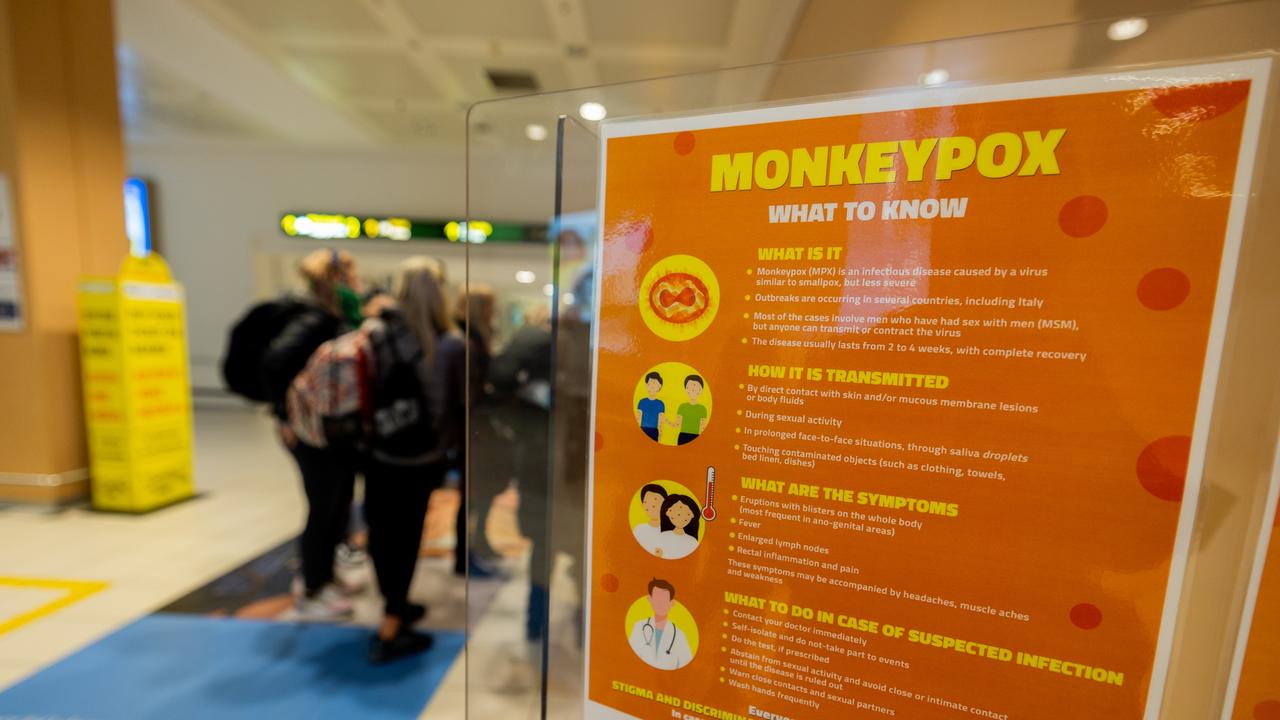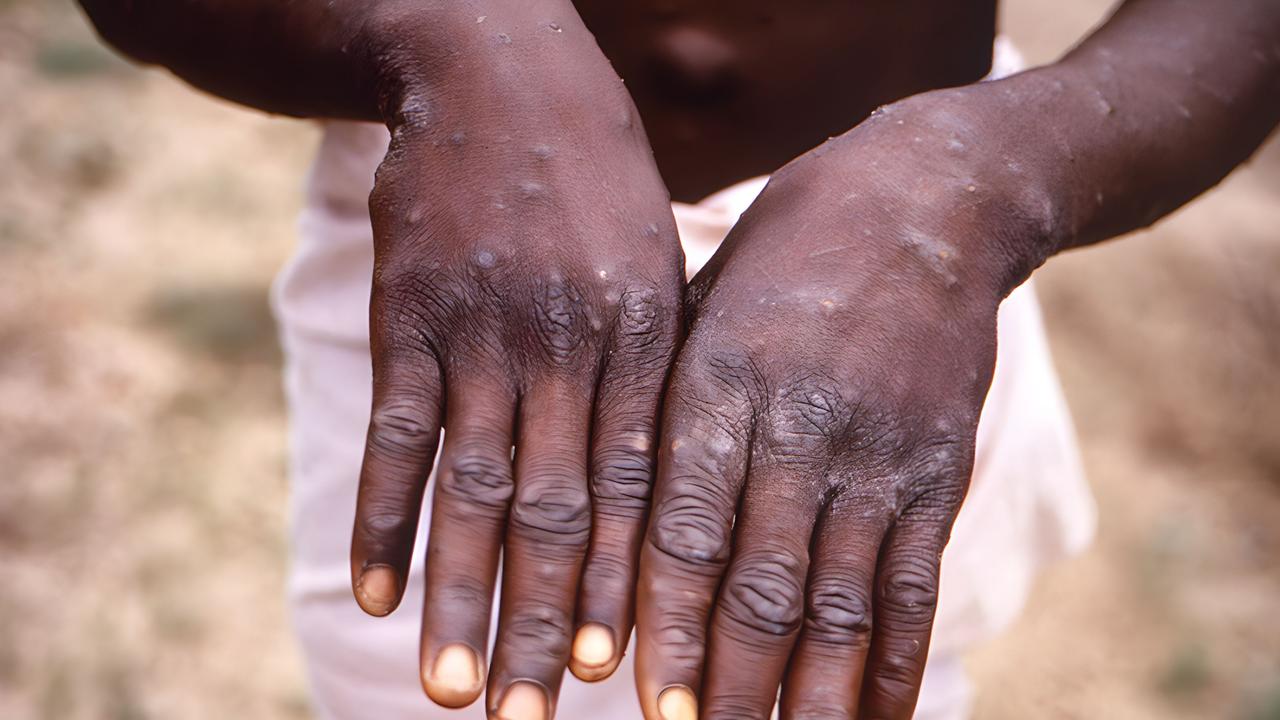What is mpox and why is it now a global health emergency?
The World Health Organisation has declared a surge in mpox cases a ‘global public emergency’. But what is mpox, how does it spread and why have health authorities upgraded the warning?

READING LEVEL: RED
World health authorities are warning an infectious strain of mpox is on the move after it was detected outside of Africa for the first time.
A more contagious variant* of mpox known as “Clade Ib” has been spreading across several countries in Africa, causing the World Health Organisation (WHO) to declare the outbreak a global public health emergency.
Days later it was detected in Sweden for the first time after a person contracted the infection while visiting a region of Africa.

The WHO reported that there have been over 14,000 cases and 524 deaths across more than a dozen African countries caused by mpox this year, surpassing* last year’s numbers. More than 96 per cent of cases have occurred in the Democratic Republic of Congo (DRC).
But what is mpox? And why has its spread caused a global public health emergency?
Let’s take a look at the facts.
WHAT IS AN INTERNATIONAL PUBLIC HEALTH EMERGENCY?
A public health emergency of international concern (PHEIC) is the highest alarm the WHO can sound and allows director-general Tedros Adhanom Ghebreyesus to trigger emergency responses under the International Health Regulations*.
A PHEIC has only been declared seven times since 2009: over H1N1 swine flu, poliovirus*, ebola*, zika virus*, ebola again, Covid-19 and mpox.

WHY HAS MPOX BEEN DECLARED A GLOBAL EMERGENCY?
Since September 2023, a different strain of mpox, the Clade Ib subclade*, has been surging in the Democratic Republic of Congo (DRC), in Africa.
The disease has since spread to neighbouring countries. The African Union health agency, Africa CDC, registered 14,479 confirmed and suspected cases of the strain and 455 deaths in DRC as of August 3, representing a mortality rate* of around 3-10 per cent.
WHAT ARE THE SYMPTOMS OF MPOX?
The Clade Ib strain causes skin rashes across the whole body.
Symptoms begin 5 to 21 days after exposure to the virus.
HOW IS MPOX TRANSMITTED?
Formerly known as monkeypox, mpox is an infectious disease caused by a virus transmitted to humans by infected animals that can also be passed from human to human through close physical contact.

A person with mpox is thought to be infectious from the time they develop any symptoms until all scabs have healed and a fresh layer of skin has formed. This may take several weeks.
Transmission between people can occur through close contact with rashes, blisters or sores on the skin. It can also be spread by coughing or sneezing and sharing linen and towels.
The virus can also pass to the foetus* via the placenta* during pregnancy.
It was first discovered in humans in 1970 in DRC, causing fever, muscular aches and large boil-like skin lesions*.
WHO IS AT RISK?
People who have had close physical contact with an mpox case and travellers returning from, or going to, countries with confirmed cases.
IS THERE A CURE OR VACCINE FOR MPOX?
“There are some vaccines that are licensed that can be used for mpox,” WHO’s technical lead for mpox Dr Rosamund Lewis said.
Negotiations between the WHO and affected countries are under way to authorise the use of one, she said.
The recommended shot in Australia is the JYNNEOS vaccine, which was developed as a smallpox* vaccine.

Vaccination is highly recommended for people who may be at risk of contracting the disease.
Cases may still occur in people who are vaccinated, but these infections are typically milder. The vaccine is also effective after exposure to the virus, but less so than if it’s given beforehand.
HOW LONG DOES MPOX LAST?
Mpox causes signs and symptoms which usually begin within a week but can start 1–21 days after exposure. Symptoms typically last 2–4 weeks but may last longer in someone with a weakened immune system*.

IS THERE MPOX IN AUSTRALIA?
Some 40 cases of mpox have been recorded in Australia this year (as of June 5). Victoria has reported 24 cases this year, while Queensland saw 10 cases reported in May.
Last year there were 26 cases recorded, according to data published by the UNSW Sydney via the National Notifiable Disease Surveillance System.
There was previously a significant mpox outbreak in 2022, with a total of 144 cases across Australia. All cases since 2022 have been in males, most commonly those aged 30 to 39.
POLL
GLOSSARY
- contagious variant: a variant, or strain, of the disease that has adapted to spread more easily
- surpassing: going past or increasing further than something
- International Health Regulations: a set of health rules and regulations that 196 countries have agreed to follow
- poliovirus: a serious virus that affects a person’s brain and spinal cord and can cause paralysis
- ebola: a rare and often fatal virus mostly found in some African countries that causes inflammation and tissue damage throughout the body
- zika virus: a virus found in some parts of the world that is spread through mosquito bites
- subclade: a sub group of a DNA mutation
- mortality rate: the number of deaths caused by a disease represented as a portion or percentage of the population
- lesions: sores
- foetus: unborn and developing baby
- placenta: an internal organ created in pregnancy that delivers nutrients to a baby from its mother via the umbilical cord
- smallpox: a contagious disease caused by the variola virus that was eradicated in 1980 through a worldwide vaccination program
- immune system: a bodily system that fights off disease and defends the body from infection
EXTRA READING
Big childhood asthma breakthrough
Strange use for caterpillar venom
Finding a cure for peanut allergies
QUICK QUIZ
1. Why has the WHO issued a global public health emergency?
2. When was mpox first detected?
3. Which region of Africa has seen the highest number of cases?
4. What is the main symptom of mpox?
5. How many cases of mpox have been recorded in Australia so far this year?
LISTEN TO THIS STORY
CLASSROOM ACTIVITIES
1. Don’t be alarmed
Imagine you are an important doctor who has been asked to speak on television to the public about the risk of mpox. Write two possible speeches that you could make on air. One should be calm and reassuring, providing common sense precautions that the public can take. Your second speech will be alarmist and cause a sense of panic.
Which speech do you think is in the best interests of public health and safety?
Time: allow 30 minutes to complete this activity
Curriculum Links: English; Health and Physical Education
2. Extension
The news story tells us that mpox was formerly known as monkeypox but does not explain why. What do you think are some logical reasons for the name change? Write a paragraph to explain your answer.
Time: allow 10 minutes to complete this activity
Curriculum Links: English; Health and Physical Education
VCOP ACTIVITY
Wow word recycle
There are plenty of wow words (ambitious pieces of vocabulary) being used in the article. Some are in the glossary, but there might be extra ones from the article that you think are exceptional as well.
Identify all the words in the article that you think are not common words, and particularly good choices for the writer to have chosen.
Select three words you have highlighted to recycle into your own sentences.
If any of the words you identified are not in the glossary, write up your own glossary for them.
Extension
Find a bland sentence from the article to up-level. Can you add more detail and description? Can you replace any base words with more specific synonyms?
Down-level for a younger audience. Find a sentence in the article that is high level. Now rewrite it for a younger audience so they can understand the words without using the glossary.

